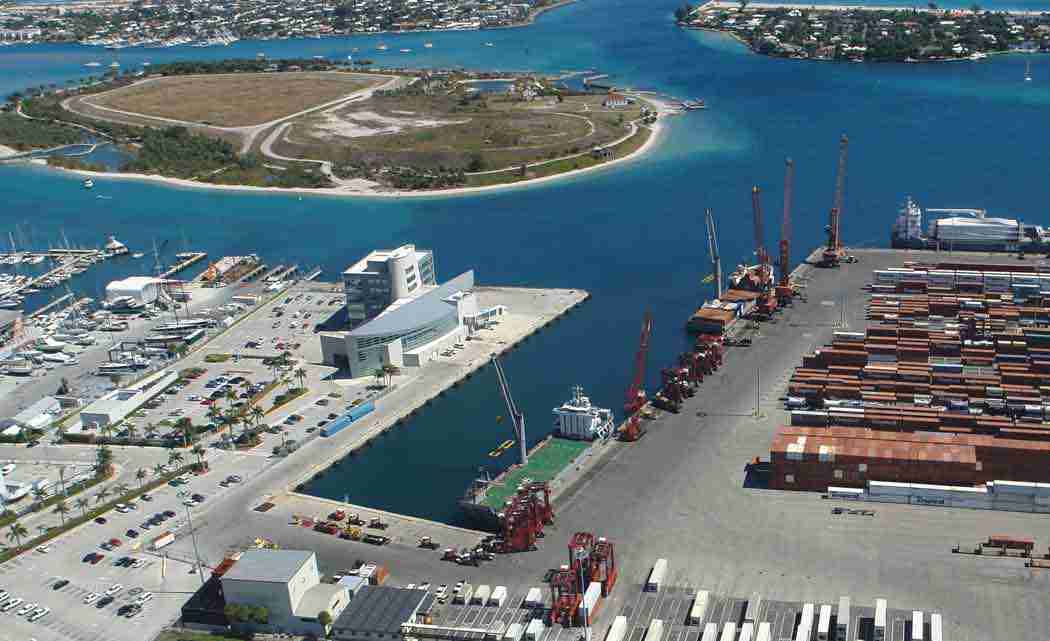By Juliana Accioly
Special to South Florida Times
At the center of a dredging debate the Port of Palm Beach has shelved its expansion plan.
Looking to accomodate larger vessels, Manuel Almira, executive director for the port, says the development would bring an estimated $7 million a year in benefits to the port and its tenants, creating jobs and boosting the economy.
But community activists say the $88.6 million project overlooks the negative effects on the residents along the inlet. A coalition of civic associations, environmental groups, the town and other municipalities around the port have raised the issue of manatees and sea grasses being harmed, greater storm surges that will threaten waterfront properties with flooding and a rise in insurance costs. Similarly, recreation and surfing along the inlet corridor could also suffer from the degradation of coral reefs and water quality.
Spread over an area of 162 acres, the port employs more than 2,400 people, contributing $260 million in business revenue. With approximately eighty percent of its cargo being exported to the island nations of the Caribbean, it is the fourth busiest container port of Florida’s 14 seaports. Its export structure supplies sixty percent of everything consumed in the Bahamas.
The dredging at the inlet at Palm Beach Harbor, which serves as a ship entrance, would widen the channel from 300 to 450 feet and deepen it from 35 feet to 39 feet. The maximum ship length would increase from 675 feet to 750 feet.
“They are trying to convert our port into Port Everglades,” says Michael Brown, communication director for the Palm Beach Civic Association. “But our port is about one-tenth of that port’s size and was designed to serve the Caribbean. Making this into a big commercial port makes no sense.”
Spearheaded by Mayor Gail Coniglio, the fight over the project made significant progress when the U.S. Army Corps of Engineers withdrew its permit application with the state Department of Environmental Protection back in June. The DEP required more details of the Corps’ plans to offset damage the project would create.
“There is no need for this project and even if they widen and deepen the channel there is no room at the port itself to accommodate larger ships,” says Lisa Interlandi, a senior lawyer at the Everglades Law Center, a nonprofit public interest law firm that is representing the coalition. “Port of Palm Beach is a niche port and needs to stay within it.”
She adds that the center will support the port in an effort to improve what it already has instead of “putting energy and time into a project that won’t pay off.”
But Almira says the imports of yachts, liquid asphalt and diesel is also important to the area and that the narrowness of the inlet poses a big concern and challenge as the entry into the Lake Worth Inlet near-shore current pushes the ships south and forces them to enter at an angle as the channel narrows from 400 feet to 300 feet.
“Much of the concern of the residents along the inlet has been generated due to misinformation on how the dredging will be conducted,” he says. “The port and the Army Corps have plenty of time to work on mitigation efforts as the funding is not even yet in place. We are looking into four or five years before this even begins.”
Almira acknowledges that the initial proposed depth might not be necessary and that in view of the friendly tone of the debate he hopes a compromise will be achieved. “We need to invest in the industry’s future, not go backwards.”
Sill, Peter Elwell, the town manager since 2001 says in the end, Palm Beach rejects any expansion.
“We would be delighted if the permit application were never reactivated.”













No Comment